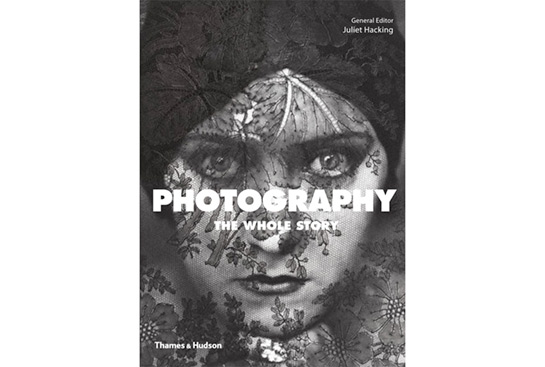Review: Photography - The Whole Story

Last year, I taught an undergraduate-level history at photography class. Having never done that before, the first challenge was to pick a book to work off. As far as I could tell, there were two books most commonly used at US art schools and universities. I owned an older version of one, which I wasn’t so excited about. So when someone loaned me the updated version of the other one I had a peek and thought it looked a bit better. That was a big mistake.
Teaching a course following a book that students (and myself) found unattractive to read (I’m being slightly generous here) is not much fun. And while history probably cannot be written with a frame of mind completely free of the ideologies that are en vogue, I do think that it is the task of a historian, especially one writing textbooks, to be very mindful of that and not to confuse the retelling of history with the advancement of any ideology1.
I’m not going to tell you which book is which here, it doesn’t really matter. I ended up adding a lot of additional content to my class. I added a lot of contemporary references that the book was simply missing. And, crucially2, I tried to connect photographic history to photography today: The study of history is almost pointless if you’re unable to make connections to contemporary issues or artists. The past, as is, is useless. Only when we’re able to identify aspects of the past in the present can we hope to have learned something.
Much to my delight (“delight” isn’t a word I use very often) I recently discovered Photography - The Whole Story. Edited by Juliet Hacking, the book was produced featuring over 30 contributors (art historians, curators, writers). In a nutshell, a specialist for any given period or subject matter writes about just that. On top of that, the book is organized simply around time frames, with subject matters/topics then covering those. That might just be the simplest way to do it. The writing in the book is compelling and a joy to read, avoiding tedious jargon where possible, while never being superficial or simplifying.
On top of all of this, the book presents quite a few individual photographs in detail. These sections are what makes this book stand out. The general background of the photograph is explained. The artist is - briefly - introduced3. What is more, four to six sections/parts of the photograph are discussed in more detail: Technical details, historical details, poses, compositions, whatever might be of relevance. Of course, learning about photography has to involve learning how to look at photographs, and Photography - The Whole Story does a wonderful job doing just that for dozens and dozens of historical photographs, some well known, many others not.
The book thus teaches the history of photography not as a large number of facts and names, which, let’s face it, are hard to remember. Instead, it uses a large number of photographs created over the course of that history, tying those photographs to what matters. Learning the history of photography has to mean seeing and understanding a lot of photographs, both how they operate as photographs and how they’re tied to the underlying history. Photography - The Whole Story superbly does just that. Given its focus, writing and design4, I think it will have a large appeal for a general audience, people interested in the history of photography. For anyone seriously interested in photography, the book is a must have, must read. Highly recommended.
Photography - The Whole Story; general editor: Juliet Hacking; foreword by David Campany; 30+ contributors; 576 pages; Prestel; 2012
1 Mind you, if you want to write a ideology-based history book, there is nothing wrong with that. Simply add your ideology to the title of the book, in the form of an adjective before the word “history”.
2 Needless to say, whether or not you will find that crucial is an entirely different subject matter.
3 Note that one would expect the focus to be on photographers, then giving some examples of photographs. But don’t people usually remember images first?
4 Check out example spreads here.